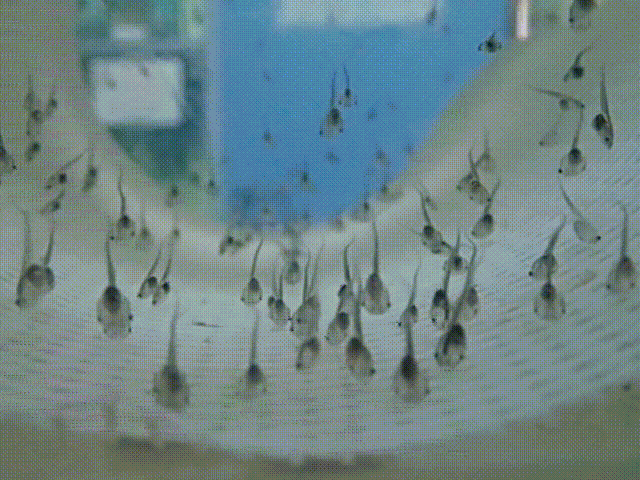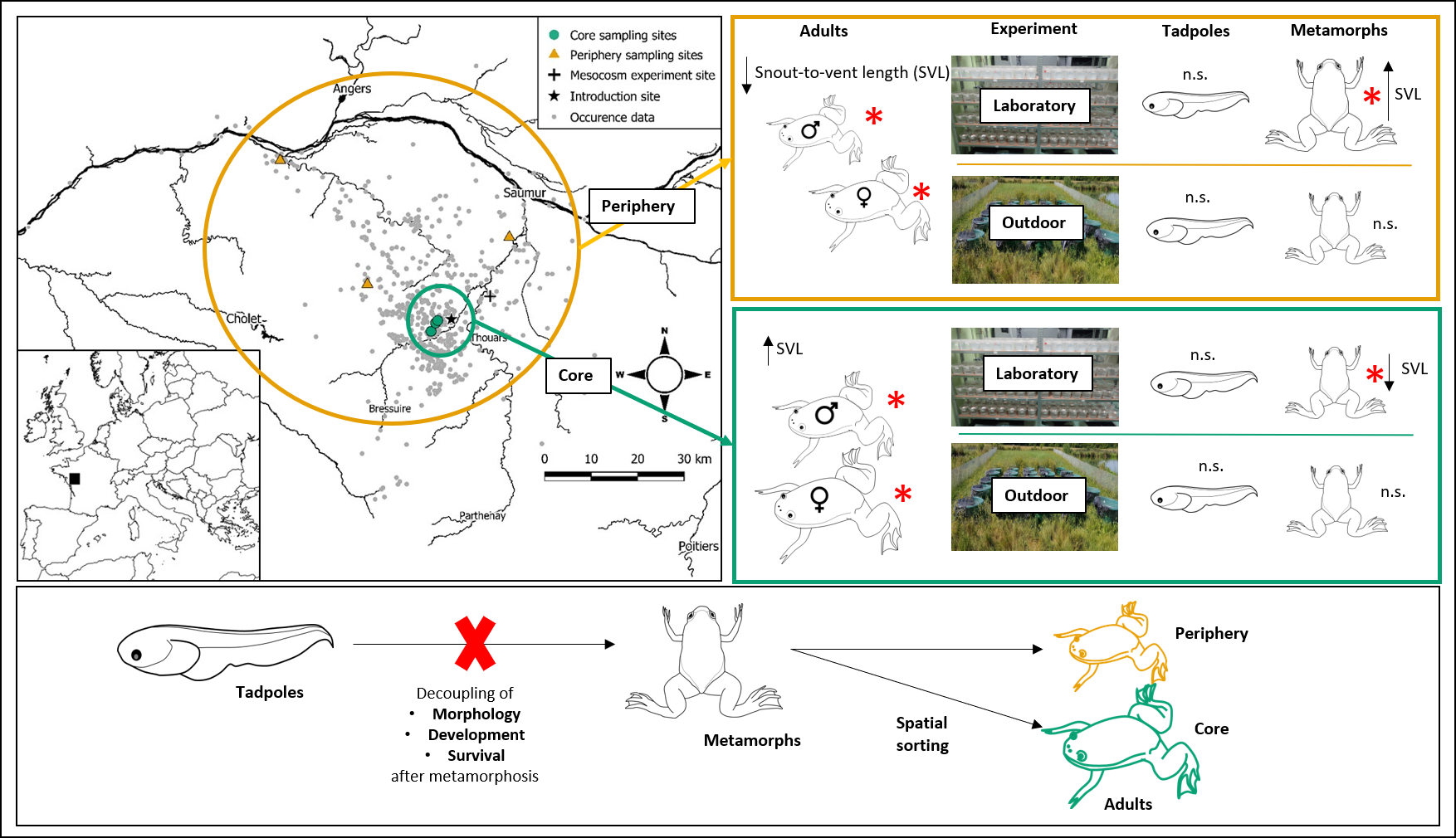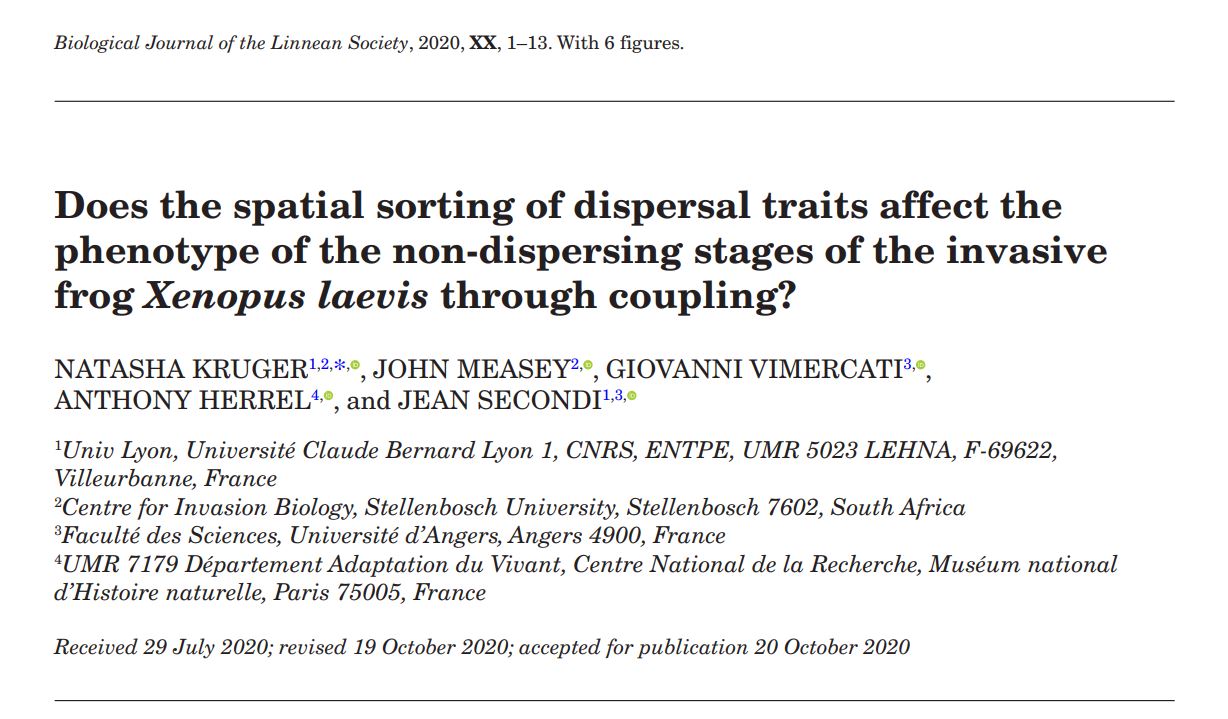Does spatial sorting act on Xenopus tadpoles in the same way it does adults?
Natasha Kruger asked this simple question during her PhD studies on the invasive population of Xenopus laevis in France. Although the question appears simple, the experiment to investigate whether the phenomenon of spatial sorting occurs in tadpoles was complex and substantial.

Natasha sampled adults from the core and periphery of the French invasion of Xenopus laevis, then bred couples from different ponds in mesocosms within their invasion range in France. In addition, she conducted a simultaneous experiment in the laboratory with one individual per plastic cup. During the development in both experiments, she monitored their morphology, developmental rate, time to metamorphosis and survival. She found that unlike adults, the tadpoles did not show many differing traits between core and periphery. One significant result was that tadpoles from the periphery raised in the laboratory reached a greater size at metamorphosis, somewhat similar to results in Cane Toads. But no significant size increase was seen in the mesocosm experiments.
Spatial sorting is all about optimising traits for dispersal. As the tadpole life-history stage in Xenopus laevis is not configured to disperse, it's not surprising that we didn't see the effects of spatial sorting on these populations. However, we did see the suggestion that animals at the periphery metamorphose at a larger size - larger metamorphs would facilitate dispersal.
As it's only ~40 years since the start of this invasion, it may be that we are now only seeing the start of the influence of spatial sorting on the larval stage of X. laevis. It would be great to do this same experiment in another 20 years to see whether there's been any changes in the distribution. According to the latest paper by Philipp Ginal et al (2020), there'll be no stopping this species playing all over Europe.
Read more about Natasha, who recently graduated her PhD from Stellenbosch University (see here). Natasha made this great graphical abstract to explain the paper:

Read more about the work on invasive Xenopus here:
Kruger, N., Measey, J., Vimercati, G., Herrel, A., Secondi, J. (in press) Does the spatial sorting of dispersal traits affect the phenotype of the non-dispersing stages of the invasive frog Xenopus laevis through coupling? Biological Journal of the Linnean Society https://doi.org/10.1093/biolinnean/blaa191 pdf
Eagle eyed blog readers will see the name of Giovanni Vimercati popping up here on this paper with Natasha. After graduating his PhD from the MeaseyLab, Gio went to work on this project for Jean Secondi (Natasha's French supervisor) at the University of Angers (near the Xenopus invasion site). Since then, Gio has gone to work at the Basher lab in Switzerland, but we haven't seen the last of him on this blog!
And don't forget to look at the modelling paper by Philipp!
Ginal, P., Mokhatla, M., Kruger, N, Secondi, J., Herrel, A., Measey, J. & Rödder, D. (in press) Ecophysiological models for global invaders: Is Europe a big playground for the African clawed frog?
Journal of Experimental Zoology Part A
http://dx.doi.org/10.1002/jez.


